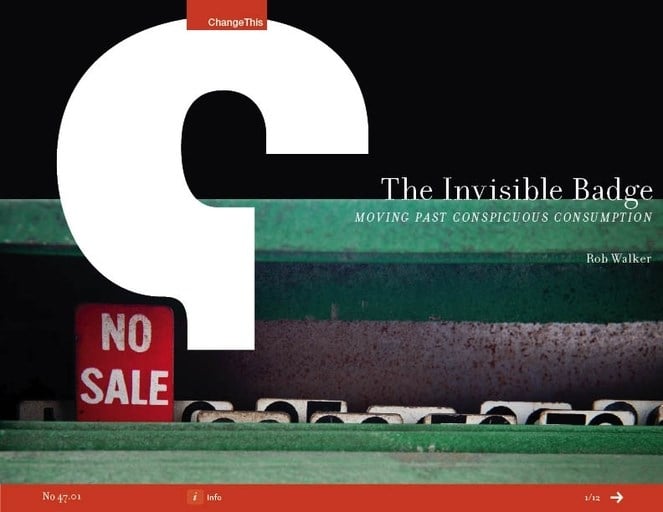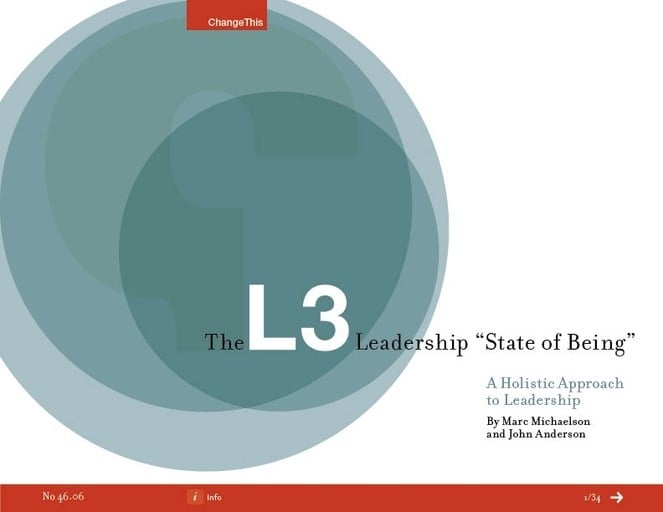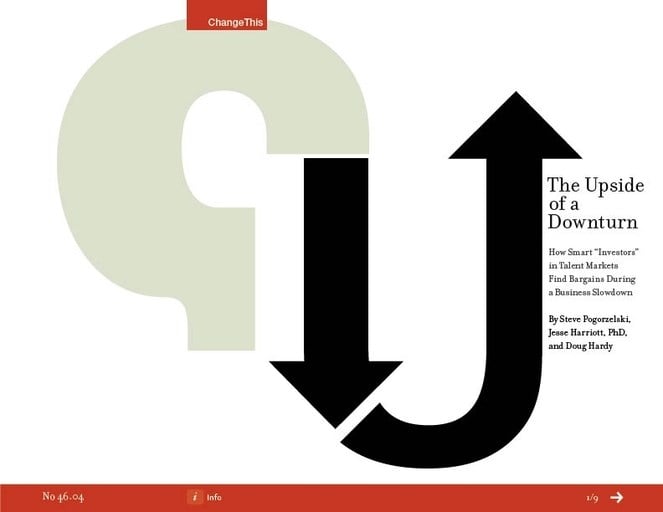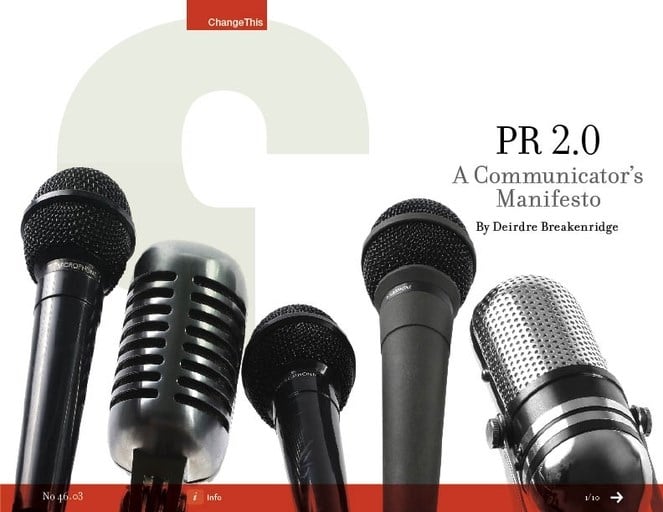ChangeThis RSS
Thorstein Veblen introduced the idea of "conspicuous consumption" in The Theory of the Leisure Class, in 1899. And it's still being recycled today. Veblen gave examples like the man who parades down Main Street in "stainless" linen, with a superfluous walking stick. These objects supposedly told a story—"evidence of leisure"— to an audience of strangers.
Today's consumer is supposed to be a little more sophisticated than that. So it's puzzling how many marketers still talk about how a certain beer or sneaker or handbag functions as a so-called "badge." Even hybrid cars are said to be eco-status markers that show "conspicuous concern" about the environment. More scholarly observers call this "signaling." But in the end it's all repackaged Veblen: The idea is that we buy stuff mostly to impress other people.
Perhaps this was true in the past. But the time has come to retire the conspicuous consumption idea. Observers of consumer culture (marketers, to name an example) need to understand that as a concept, it's inadequate. The rest of us (consumers, that is) need to understand that even if we wanted it to work, it just doesn't anymore.
There is a better idea—the invisible badge.
Continue reading
"The World is Flat, declared Thomas Friedman.
It is a Long Tail, says Chris Anderson.
Everything is Miscellaneous, avers David Weinberger.
Seeing it as The Wisdom of Crowds was a profound insight from James Surowiecki.
Their perspectives addressed several aspects of business, life and the human condition in general.
The truth is that we have reached not one era, but a multitude of eras, all at once and in a time-space compressed fashion. This has caused a shift in our expectations and our practices that impacts how we work, what we consume and how we live life.
Currently, the only tool that we have in our hands to combat this phenomenon is Change Management. It is a linear response to the non-linear set of changes happening in this Poly-Era (or Era containing multiple Eras). It is so Newtonian. We need a holistic new paradigm.
Complex Systems, on the other hand, has the beautiful notion of Emergent Structures, which are patterns not created by a single event or rule. Instead, the interaction of each part with its immediate surroundings causes a complex chain of processes leading to some new order.
The Connected Intelligence System is a practitioner-centric corporate operating system that augments Knowledge Work. The principal components emerge out of simple interactions of fundamental components and are based on Complexity Thinking.
It provides tools to address the changes that have taken place all at once in the human enterprise due to the coming of the Poly-Era in a holistic fashion.
This manifesto presents the case for the need of a Connected Intelligence Operating System."
Continue reading
"With all the talk about Leadership these days, many managers and executives are frustrated by the myriads of approaches to Leadership Development. The L3 Leadership model assumes a different position than traditional, or even more progressive leadership models. L3 Leadership is more about who you are than it is about what position you hold, what training you have had, or what personality traits you bring to work and other life situations. L3 is based on the fact that personal leadership is a "state of being." It is who you are, what you believe, and how you behave.
The L3 model of Leadership explores three critical attributes of effective leaders. These three attributes are:
o L1—Leading Self: Total Life Leadership. Achieving personal mastery and work/life integration.
o L2—Leading With Others: Creating and sustaining Collaborative Advantage.
o L3—Cultivating The Best Place To Work: A culture of high engagement, retention, performance and productivity."
Continue reading
"A slowing economy has tangible burdens, as employers become cautious in hiring (or even lay off workers). More subtle and insidious is the way even a gentle slowdown in consumption can trigger a well known vicious cycle: Lower corporate revenues lead to job insecurity, which causes consumers to tighten spending, which hurts revenues, which causes more corporate belt-tightening, and so forth until something (government spending, easier credit, unforeseen demand) halts the cycle.
This cycle offers a break in the fevered efforts to attract and acquire the most talented employees, a chronic problem that has beset booming economies for the past decade. To take advantage of a temporary lull in the chronic shortage of top talent, managers in HR and executives leading companies must adopt the longer-term practice we call the Engagement Cycle."
Continue reading
Today, an immense change is happening to PR and it will affect communications professionals around the world from this point forward. The concept of PR 2.0 was born about 10 years ago (although not many people know this). PR 2.0 places a whole new meaning and value on PR and marks the true convergence of PR and the Internet. I believe that with PR 2.0, a new breed of Web savvy PR/marketing professionals has been born. As a result of PR 2.0, brands are able to have conversations directly with their customers in niche Web communities. They are invited to participate in dialogue, in places where they have never been invited to participate before. PR 2.0 puts the "public" back in public relations with the ability to speak to more people. The concept is driven by technology (the Web 2.0 platform and social media applications) and 21st century consumer behavior.
Continue reading










